With the new year, I thought I’ll try something different from the typical reflection kind of post I’ve been putting out so far. I’ll like to try something more interesting and less serious! 🙂
I believe almost every Singaporean would be familiar with caifan, chap cai png, vegetable rice or economy rice. However you call it, they all mean the same thing. Customers choose from numerous trays of cooked dishes, ranging from meat, vegetable, eggs and tofu, to go together with a serving of steamed rice. So simple and so many choices to suit your tastes, I admit I’m guilty of eating caifan almost every day…
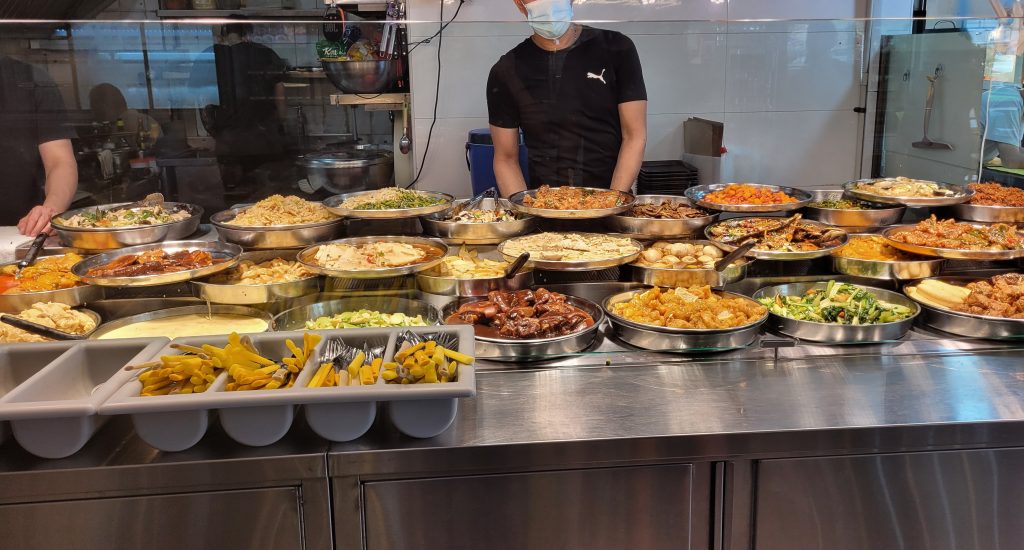
Since I was getting too bored during December holidays, I decided to take my caifan obsession one step further! I embarked on a ridiculous culinary adventure to explore its origins and recreate some of the dishes at home, well just for fun.
Why is economy rice caifan?
Well, we know caifan is predominantly a Chinese cuisine, that is very similar to its Malay or Indonesian equivalent, nasi padang. In fact, caifan (菜饭) literally translates to vegetable rice, or rice with dishes.
While most dishes trace back to their Chinese roots, a few of them blend ingredients from different regions. I will cover (and cook) some of my personal favourites in detail later 😊
Why is caifan economy rice?
A less obvious question: is caifan economical? In my opinion, largely yes. It’s almost everywhere in hawker centres, coffee shops and food courts in Singapore. And it’s definitely faster than McDonald’s, KFC or other fast food restaurants.
Caifan is mostly an affordable option too, if and only if you choose dishes wisely.
Fun fact: Years ago during the post-war period, economic rice cost $0.08 (8 cents!) for 1 meat, 1 vegetable, rice and a drink to help with food shortage
However, with inflation and rising cost of living, is caifan really economical now? Honestly this depends on location: Caifan will remain cheap in coffee shops around residential neighbourhoods, but cost significantly more in atas food courts around high traffic areas downtown.
It also boils down to what kind of dishes we choose. And this can be rather tricky… Some vegetable dishes can deceivingly be more expensive than expected because of added meat. In addition, not all prices of meat dishes are fixed. Seafood and large meat pieces e.g. shrimps, fish, chicken leg and pork chop are usually more expensive.
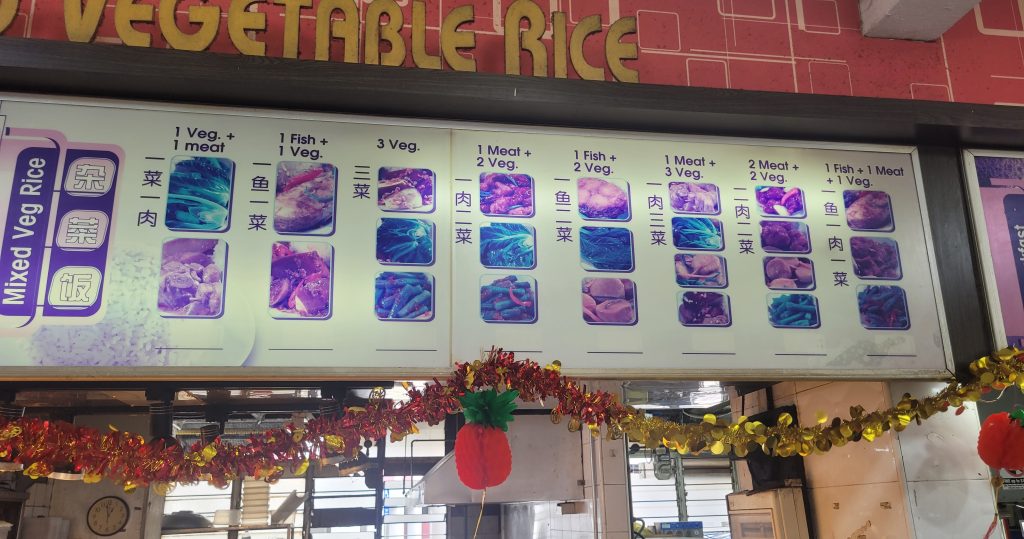
Unfortunately, it’s such a prevailing issue how there’s a lack of transparency when it comes to the pricing of the dishes. Some stalls do not include a price list, and this might cause confusion and dissatisfaction amongst customers when they feel they are unreasonably overcharged.
I think having some sort of a price guide and colour coding for special dishes can clear up ambiguity in food prices, especially for seasonal food items. But some stall owners might be hesitant to implement such changes. They are worried that customers would become calculative and slow down the ordering process.
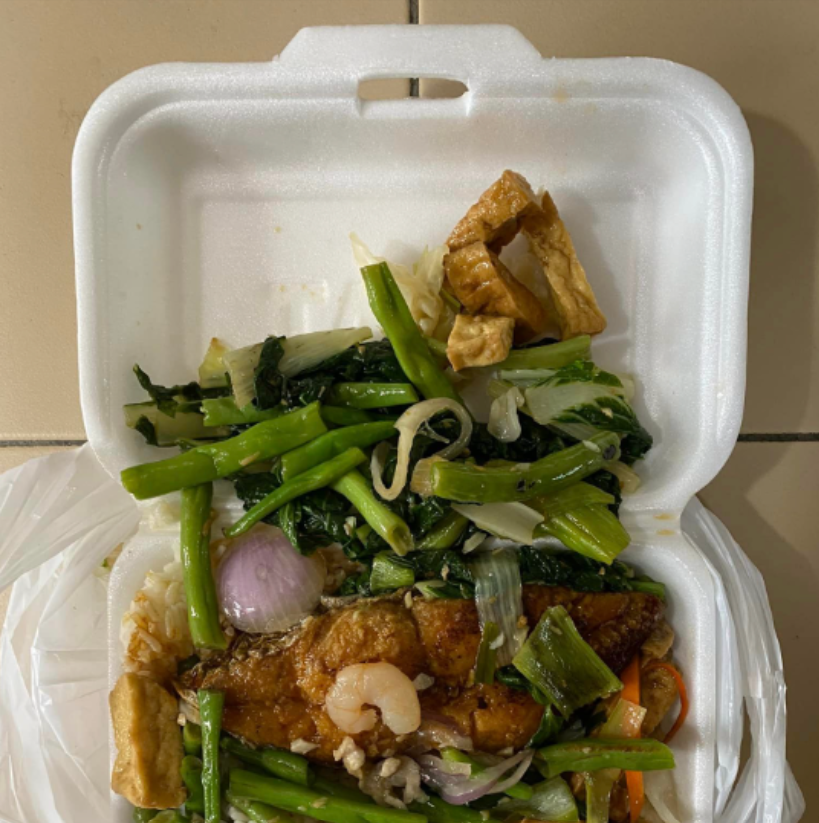
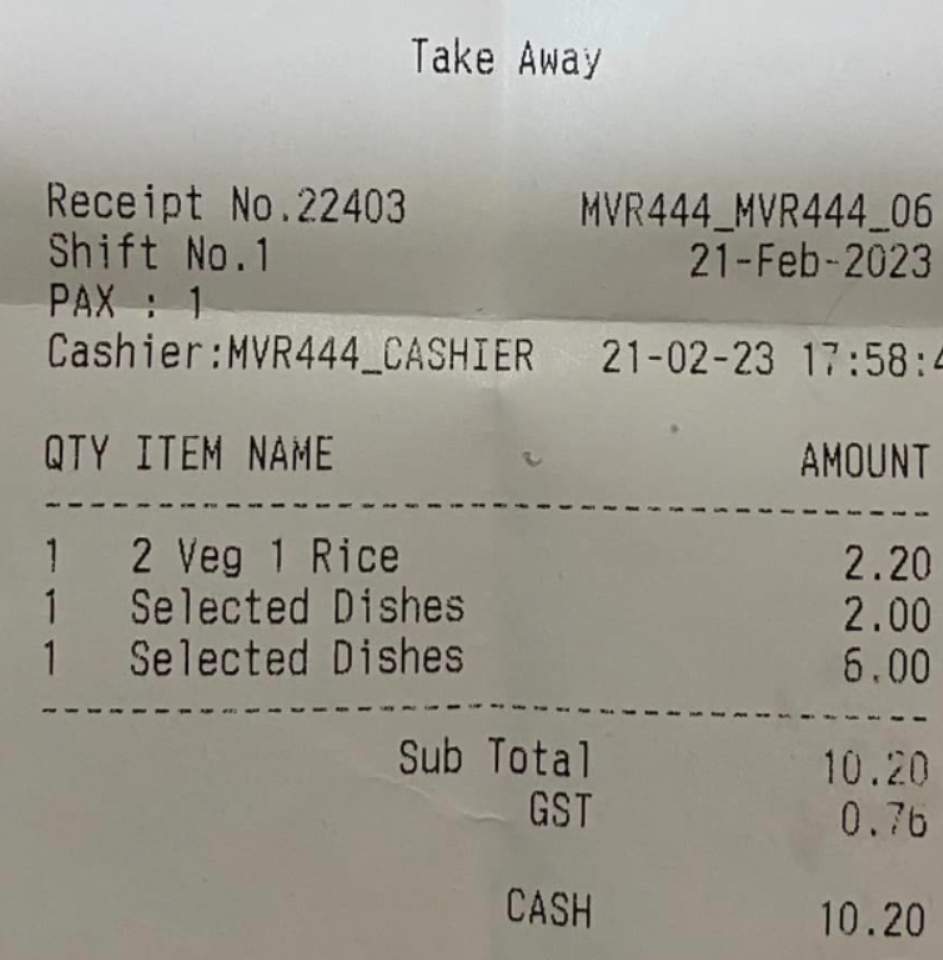
For the thrifty caifan-er, it’s best to avoid picking dishes cooked with fish, seafood and small pieces of meat. When unsure of the prices, don’t be afraid to ask before choosing your next dish. So that you won’t end up paying more than $10 for your cai fan…
As tricky as caifan prices are, I too have some more tricks up my sleeves 😉
Caifan tips & tricks
Couple of online users have proposed a few Caifan hacks, such as ordering the meat dishes first and saying 多一点饭 (duo yi dian fan) instead of 加饭 (jia fan), which directly translates to “a bit more rice” instead of “add rice”. Additionally, when taking away with two dishes, say 两菜而已 (liang cai er yi) so the cai png owner will help to fill up the takeaway box. Honestly, from my years of eating Caifan, I never really thought about how effective these hacks are, until I started trying them out recently.
Based on my results after a single round of experimentation at my school and my neighbourhood coffee shop, I realised the hacks don’t quite work as desired…
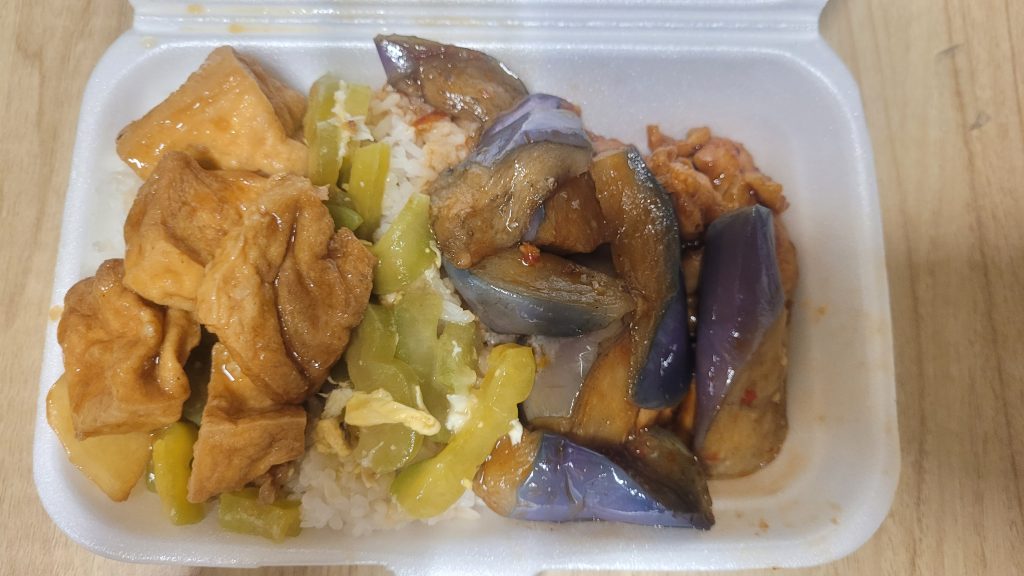

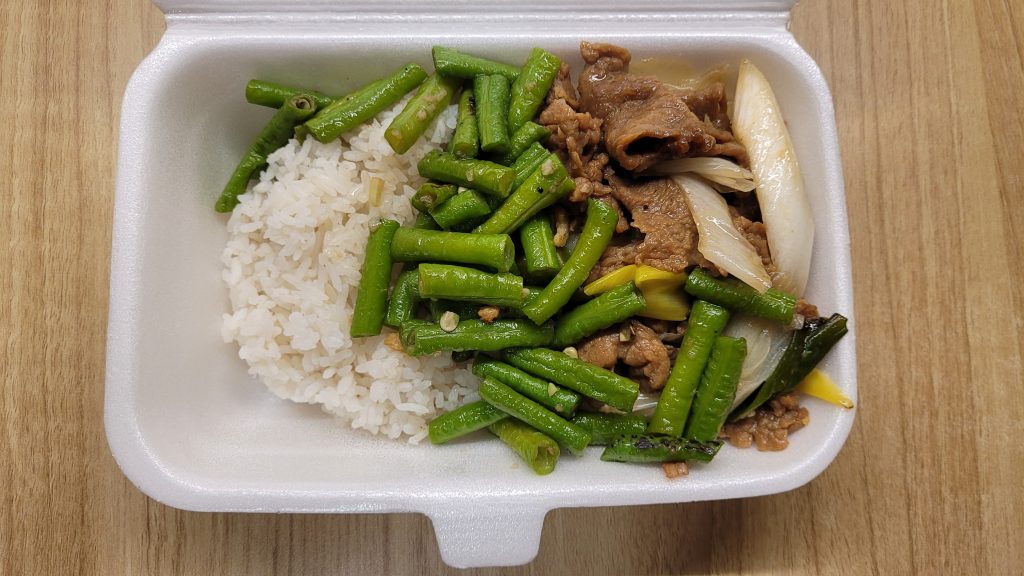
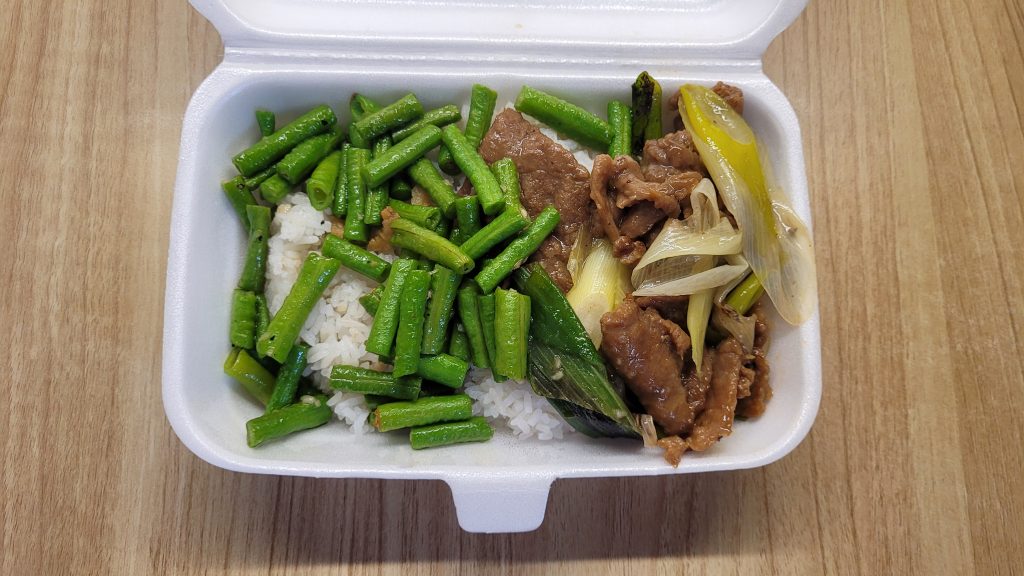
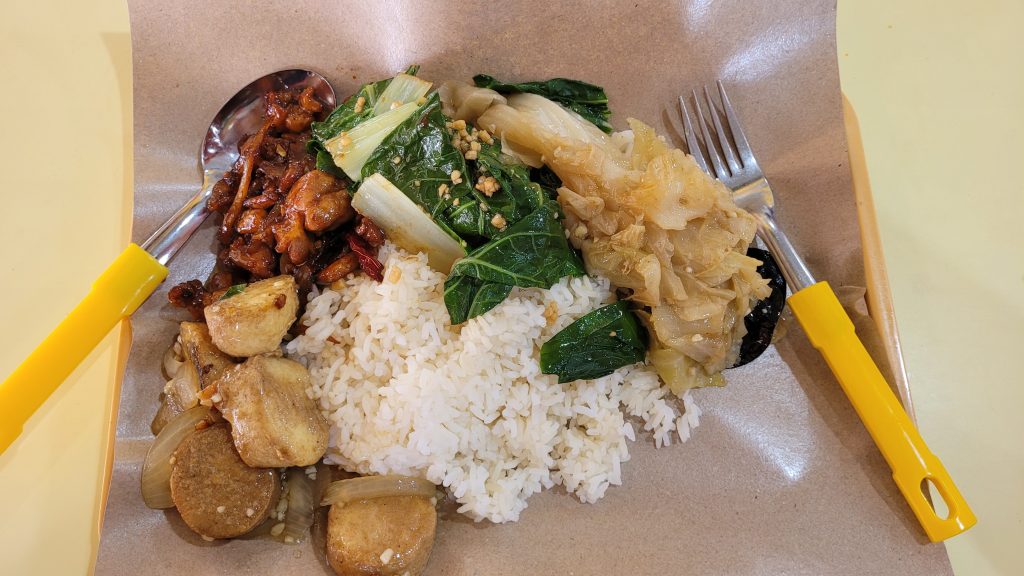
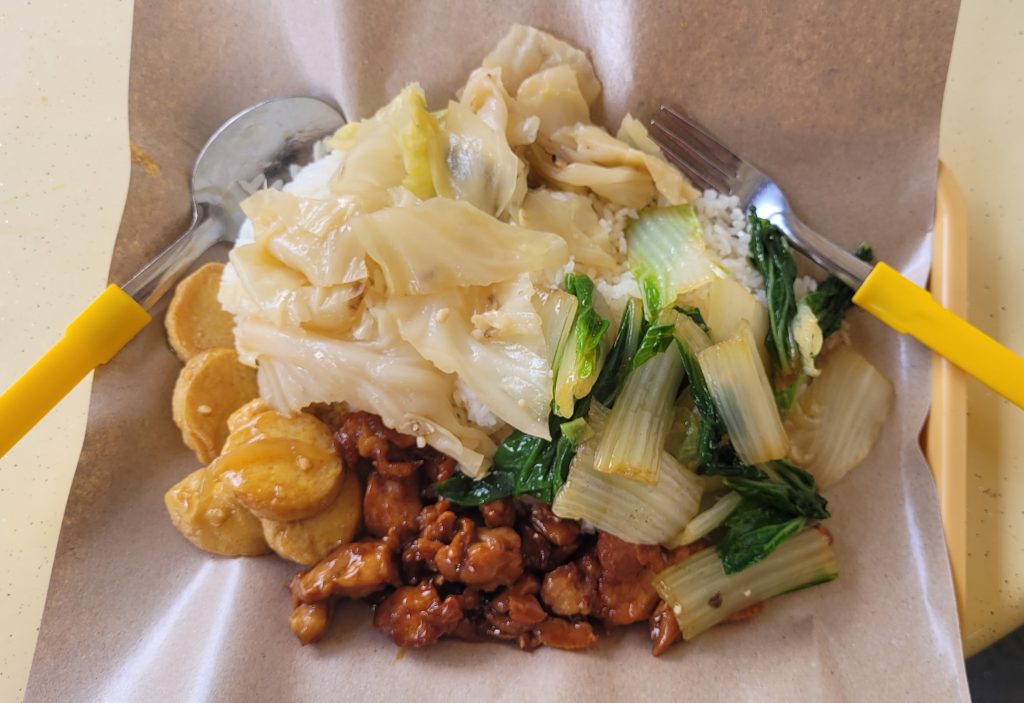
Of course, that being said my methodology is not the most ideal. If I was serious, I would have ordered the exact same dishes and used a weighing scale to be less subjective in my conclusions.
Wait wait wait… I do however have a cai fan theory that needs more proving. Here it is!
Don’t pick your dishes too fast; wait for the cai png boss to happily scoop finish before choosing your next dish. It’s a psychological trick to get a bit more bang for your buck!
Rayson Oon – 2024
Well, regardless of whether the hacks work, still try them out for a chance of getting free extra portion HAHAHA
The adventure begins
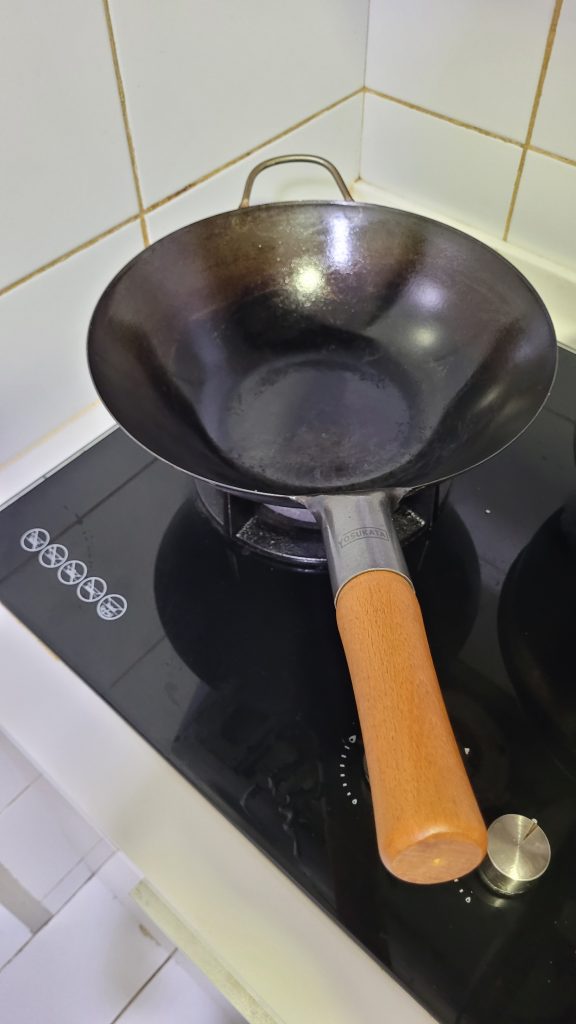
As a seasoned caifan-er, what struck me was how simple the concept of cai fan is – fry some dishes and then serve with freshly steamed rice. It reminds me about the comforts of having a home-cooked meal, which kind of inspired me to start cooking again. Perhaps it isn’t that hard, right?
Feeling motivated, I came up with a home-cooked caifan masterplan: I narrowed down 12 11 dishes from my personal favourites to hot sellers at caifan stalls. Every week, I would challenge myself to cook 3 dishes for a month.
This was no easy feat though. I took a while to search and sift through various recipes online and then do all the necessary grocery shopping. After everything was well prepared, it’s time… to heat my wok and start cooking! >:)
To feel like a pro Chinese masterchef, I used a Yosukata Carbon Steel Wok (30cm), which is an absolute workhorse when it comes to stir-frying anything with wok hei. The cost price might be slightly intimidating, but it is such a solid investment that can last a really long time, compared to other “cheap and good” cookware I’ve bought so far.
Meal 1
For my very first meal, I decided to cook Sweet and Sour Pork (I would say the most popular Caifan dish that almost everyone orders) and my 2 personal favourites, Onion Omelette and Stir-fryed Okra.
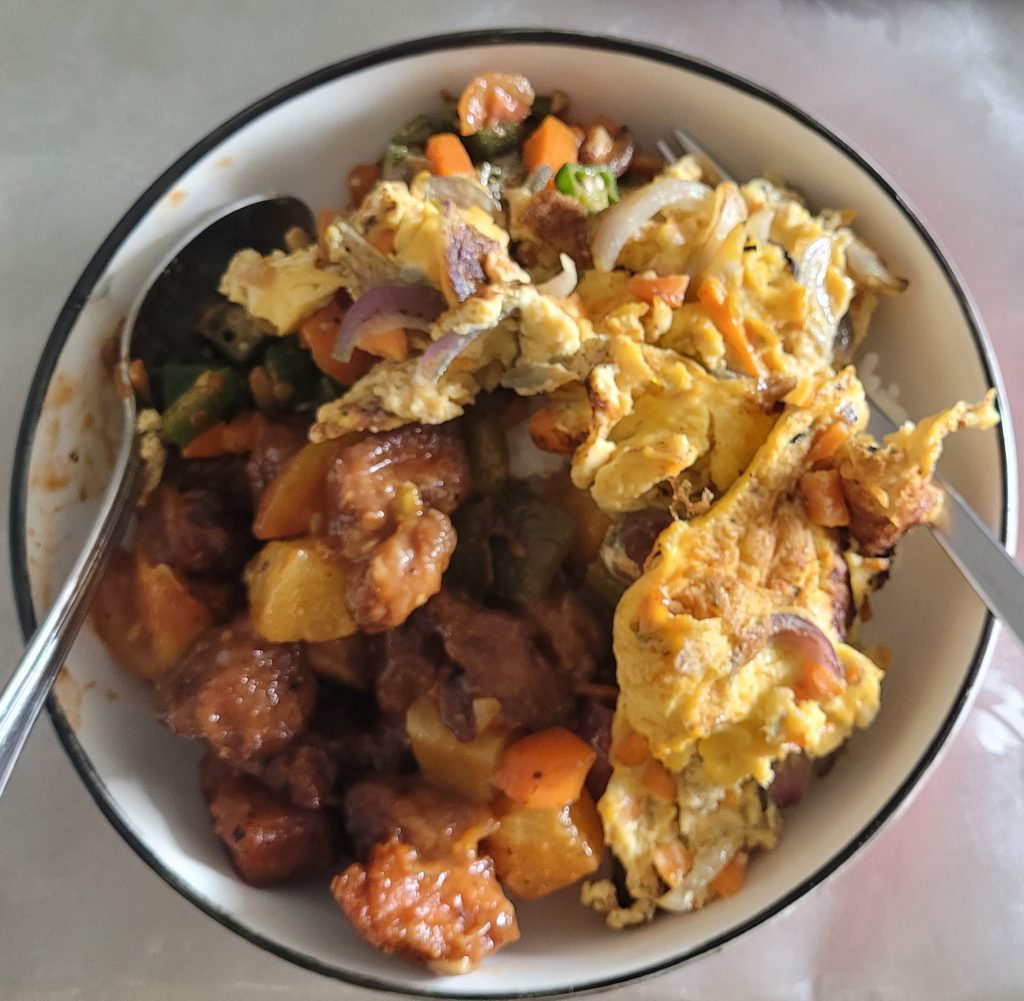
The result? Sweet and sour pork ended up rather salty instead, not close to what the name of the dish had promised… I admit I did mess around with the sauce mixture. I reduced the amount of sugar for health reasons and didn’t include plum sauce, which could actually elevate the citrus flavour of the dish.
Okra aka Lady’s fingers was pretty meh. I didn’t do justice to my favourite vegetables HAHA. Felt I could have seasoned the dish better to bring out its flavours.
The last dish was the saving grace. The onion omelette was simple & simply delicious! With just 2 main ingredients, it’s hard to go wrong for something quick & nice.
Meal 2
Moving on to the second week, I picked Lemon Chicken, Tomato Egg & Curry Vegetables.
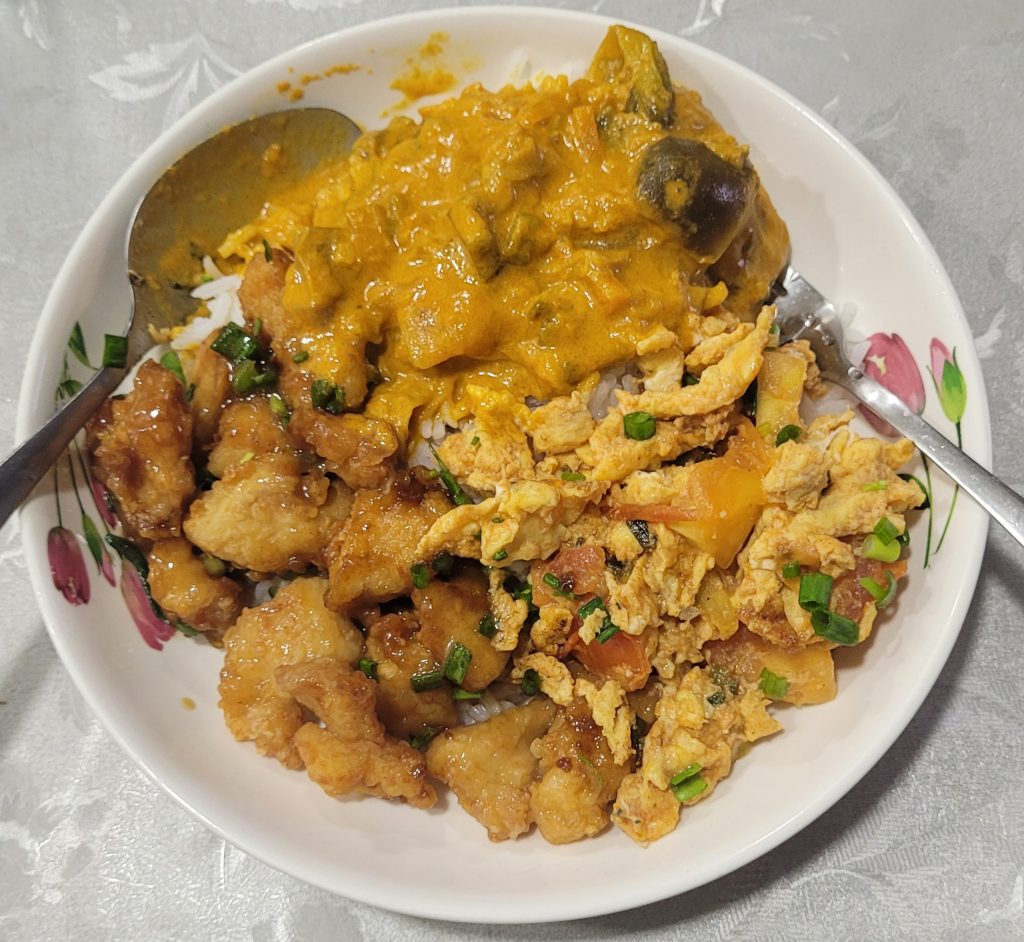
Same issue as the sweet and sour pork, Lemon Chicken… didn’t feel like lemon at all. The sauce was underwhelming and could do with a lot more lemon juice (juice from 3/4 instead of 1/2 a lemon).
I accidentally overcooked my Tomato Egg. There were some parts that was charred black and spring onions became winter onions 😑 Yes, I did follow the recipe to add spring onions early. Lesson learnt: use the white parts for cooking at the end and the green ones mainly for garnish…
For the curry vegetables, I made a mistake of being too generous with the coconut milk, which caused the texture of the gravy to become too thick and milky. On that note, I didn’t want to waste food and keep any unused coconut milk hehehe
Meal 3
The following week, I made steamed egg, stir-fry eggplants with garlic and ketchup hotdog & potatoes.
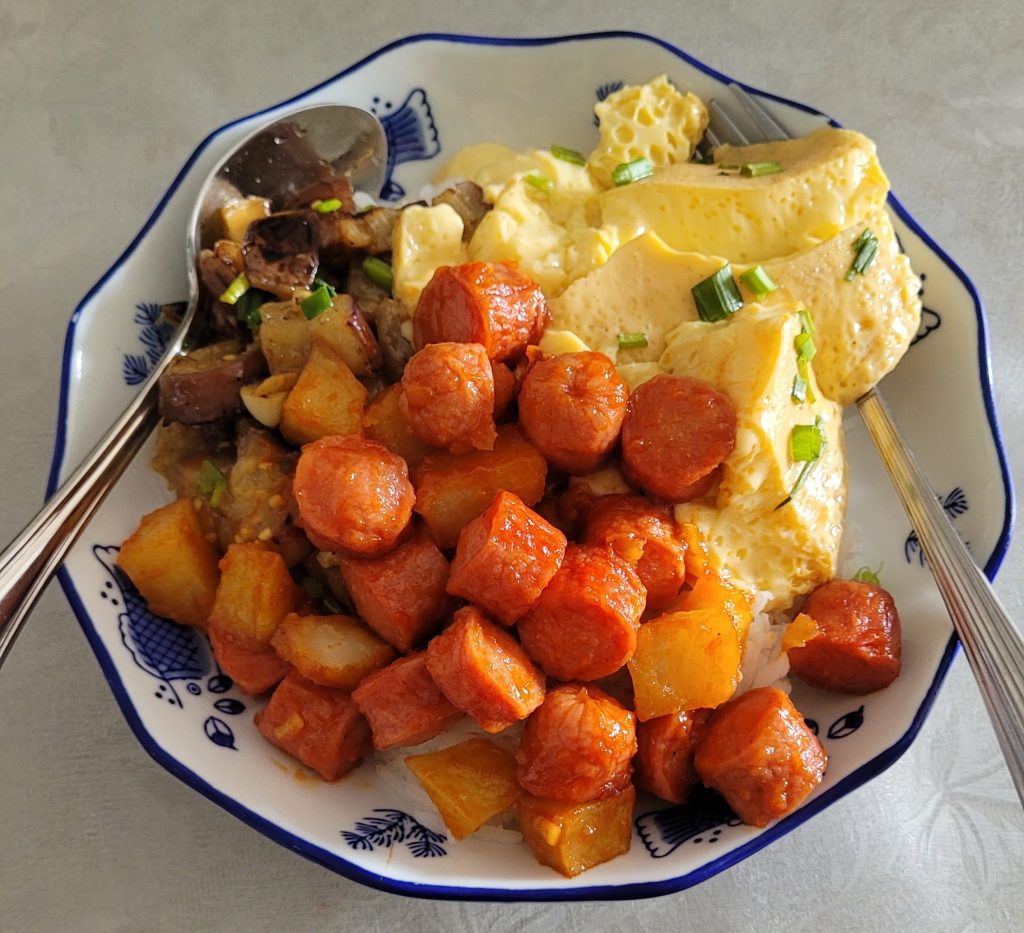
I expected the steamed egg to be silky smooth, but mine was full of holes and swimming in a pool of water… way too much water. It doesn’t have much of a taste too, though the soft, jelly texture complements the other dishes well.
The eggplants turned out pretty meh. I’m thankful that they didn’t turned into a mushy mess though. I believe pre-salting really helped to drain the excess moisture from the eggplants. However, I would definitely prefer a slightly spicy version, like this Sichuan Eggplant Stir-fry.
Last one is a classic Western fusion: ketchup hotdog & potatoes. This perhaps appeal more to the tastebuds of younger people. Simple to make and delicious. However, it was a little dry. I would add more ketchup sauce next time.
Meal 4
And the last meal of the week: marmite chicken, tomato egg and braised egg tofu. Originally intended to cook bittergourd with egg, but sadly the supermarket ran out of bittergourd 🙁
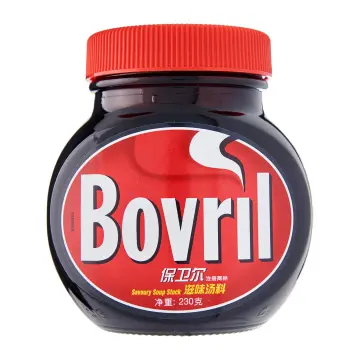
I thought marmite chicken was kinda cool. I tried finding actual marmite on supermarket shelves, but stock hasn’t been coming in for a while sadly. Luckily, there was an alternative called Bovril. I tried it and it felt like salty cough syrup on its own… It’s really such an acquired taste and I definitely do not want to eat it by itself.
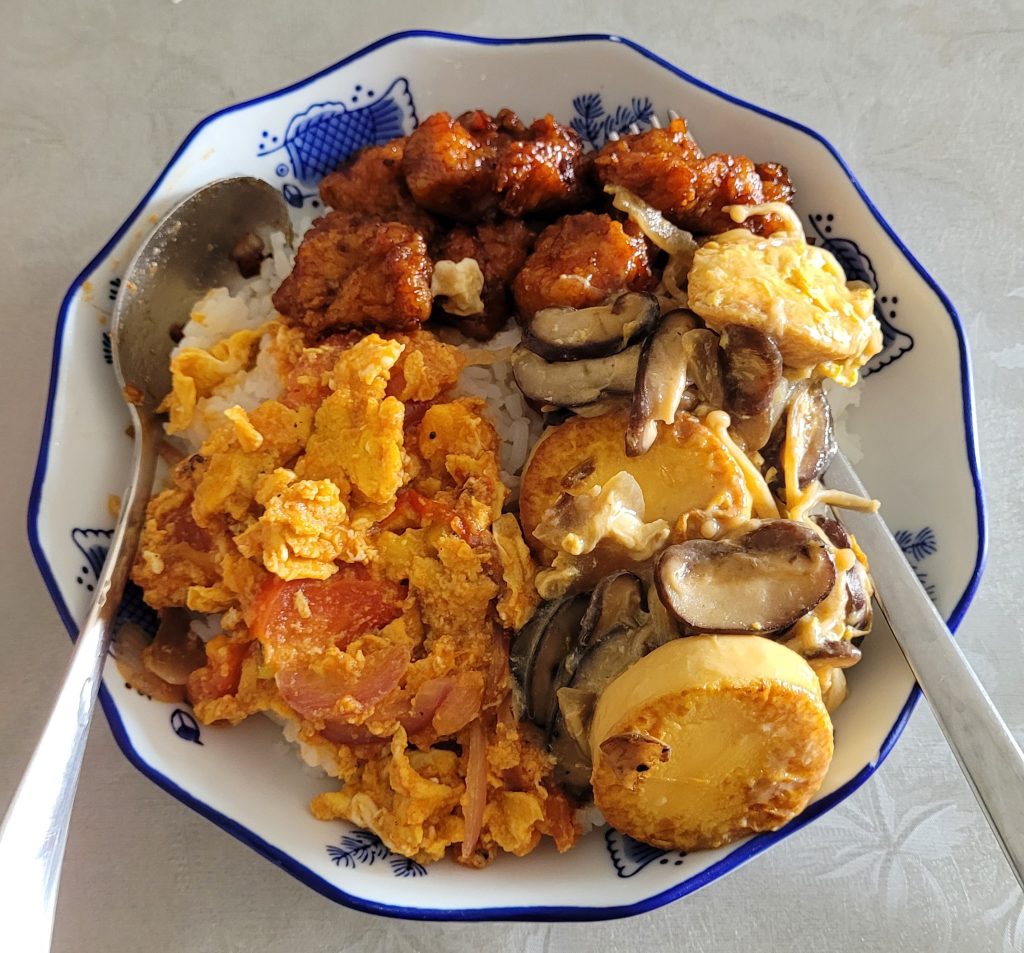
As for the braised egg tofu, I added too many mushrooms that ended up rather bland and clumpy, in a bid to reduce food waste again. Besides that, I think I could have added more sauce ingredients too. Most of the good sauce had evaporated already when I was done cooking 😢
On the bright side, my second attempt to cook tomato egg turned out better than expected. I tried the Cantonese method and it gave a nice, layered texture to the omelette. It tasted so much better as well!
Frustrations
Cooking is honestly such an intense activity: not just physical but also a mental workout. Knowing when and how to flip your egg, mentally running through the recipe in your head step-by-step. I do miss out ingredients sometimes, even after diligently referring to recipes hehehe
But that’s not the hardest part.
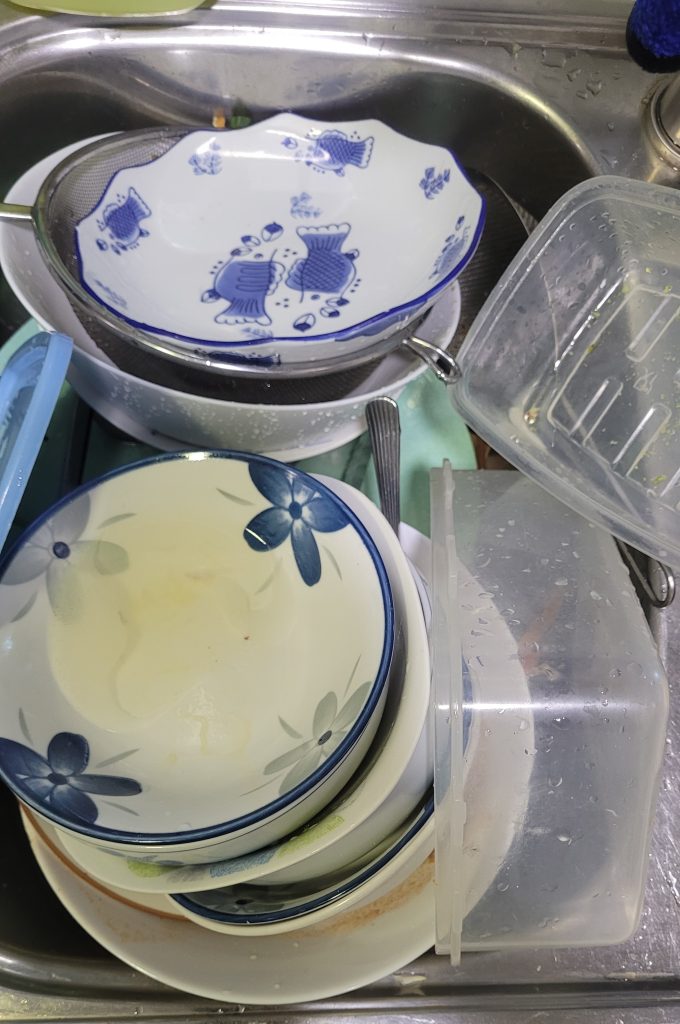
This is the hardest part. Washing the dishes and cleaning up the kitchen. Yes, I would just enter a perpetual state of food coma after devouring down all my hard-earned food I’ve prepared. Who wants to clean up the mess?! Nevertheless, I’d push through my laziness, take the sponge, start scrubbing dreadfully and zoning out. Afterwards, I’ll be so tired and retreat back to my lovely bed 🥱
And I must admit cooking is such a commitment. Fresh ingredients are usually sold in bulk, and they don’t last long. So I would have to constantly think of ways to reuse extra ingredients in another recipe.
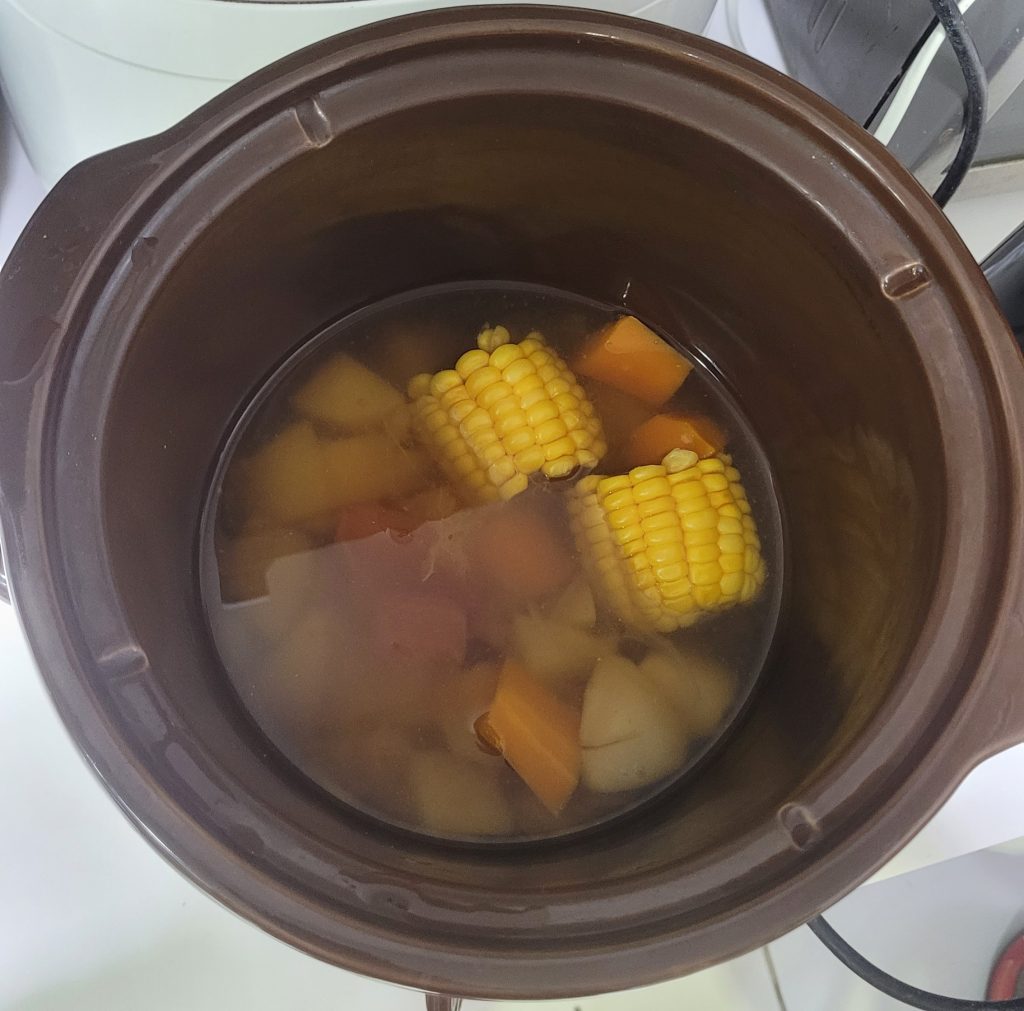
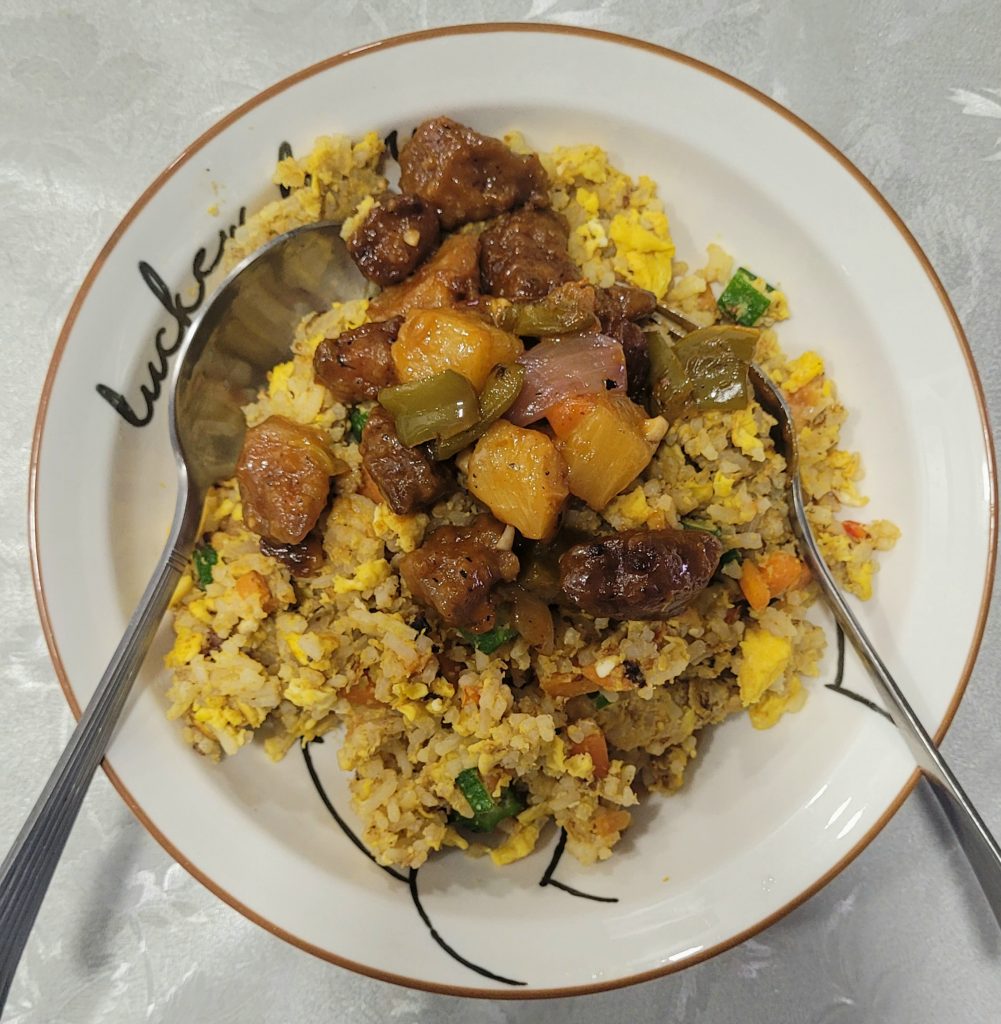
These are some tasty solutions I have! For most leftover ingredients, I decided to throw them into a slow-cooker and simmer some good soup or stir-fry them well into fried rice for lunch. However, there’s still that jar of Bovril that I don’t know what to do with… Ideas appreciated please!
Adventure complete!
While it was really exhausting, I had a lot of fun recreating my favourite caifan dishes at home. They were Iess oily than most cai png shops, and it was so satisfying to eat my very own home-cooked caifan.
Also, I truly gained enormous respect for the cai png uncles/aunties who cook and serve relentlessly throughout the week. They cook way more than I do and also entertain countless of customers every day. Caifan might not be our national dish, but it surely plays a significant role in feeding the nation from the past till today.
For anyone who is interested to replicate my recipes, I’ve consolidated them here. Most of them are of course not perfect. If you intend to follow the recipes, I’ve suggested some improvements earlier that you could consider.
Some more food for thought about caifan facts & hacks 😉
Everything You Need to Know about Economy Rice Cai Png in Singapore – Alex Kwa
Commentary: There’s a simple fix to online ruckus about economy rice prices (channelnewsasia.com)
Wow can’t believe I read so much into caifan! Such is a random post when my mind is all over the place HAHAHA
Thanks for dropping by anyways. If you’re keen, leave a comment below to share what’s your favourite caifan combo and why 🙂